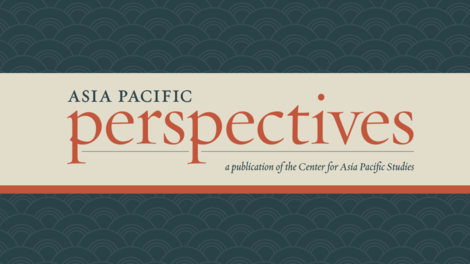
Volume XIII, No. 2: Fall/Winter 2015-16
Editor’s Introduction

The USF Center for Asia Pacific Studies is pleased to announce the publication of the Fall/Winter 2015-16 issue of Asia Pacific Perspectives. This special issue focuses on advertising and marketing in East Asia as a lens for understanding cultural encounters and interaction between Asia and the West from the 19th century to the present. These articles offer insight and new perspectives on how culture has influenced the advertising and marketing of products in East Asia both historically and in the present and contribute more broadly to academic discussions on issues of modernity, cultural and racial identity, gender, stereotypes, and globalization. In every case, these papers reveal the importance of not just the text in advertisements but the “power of images.”
Examining “little things of great importance,” Valentina Boretti reveals how during the 1910s-1930s, children and their toys became part of the larger discourse on modernity and China’s efforts to remake itself and its future generations. As Chinese and foreign companies sought to market their products, children and their playthings became marketed as symbols of China’s progress and enlightenment.
Cecile Armand’s article reveals how Sun-Maid, an American global company, introduced itself and ultimately succeeded in the Chinese market. Through a case study of its raisin marketing strategies and practices employed in the making of the actual advertisements in the 1920s-1930s, Armand reveals how the company adapted to the Chinese market and succeeded in turning a luxury product into a very popular brand.
In the next article, Kaori Want examines contemporary Japanese advertisements featuring haafu. Want’s article aims to fill a void in haafu (multiracial) studies in Japan by focusing attention on the presence of haafu in advertisements and reveals how idealized images of haafu promote stereotypes that stand in stark contrast to the real life experiences and diversity of haafu in Japan today.
Our graduate student paper for this issue highlights the work of Tina Tan, a second-year student in USF’s joint MA in Asia Pacific Studies/MBA program. Exploring the buying practices of Chinese consumers in the luxury and fashion market, Tan notes the tension between ideas of Chinese nationalism and Chinese consumers’ growing desire for Western luxury brands, and the incorporation of “Chinese elements” by both sides as they strive to obtain their share of the market.
We end this issue with an informative survey by Jing Chen on the state of the archive in the study of advertising in China. Chen’s examination of digital resources on advertising in China will be of great use to scholars seeking to enhance their research through the use of advertisements. In order for scholars to be able to fully utilize ads as a source for their research, Chen calls for the systematic collection of ad images with fully annotated metadata.
Many thanks to our new assistant managing editor, Leslie A. Woodhouse, for her hard work and efforts in ensuring a seamless transition to the team and that the high standards set for the journal are achieved. Thanks also to Tom Henke and the Web Services Team at USF for their contributions in bringing this issue to our readers.
— Dr. Melissa S. Dale, Editor
